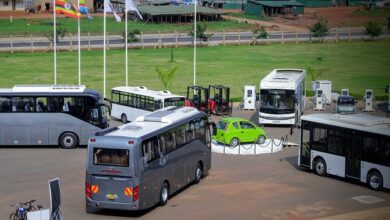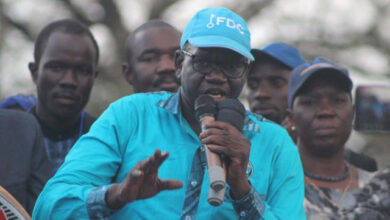
By Guest Writer
Opinion: The perpetuating circularity between poverty and gender-based violence (GBV) continues to inflict itself on many local communities in Uganda, with a heightened emphasis on displaced populations.
In particular, the dreadful experiences of women and young girls in the resettlement areas, displaced by various projects sanctioned by the government, offer compelling evidence of the complex link between poverty and gender-based violence (GBV).
Survey findings from a 2022 report by “Afro Barometer” on “Frequency of Gender-Based Violence in Uganda” show that GBV ranks at the top of Ugandans’ priorities among women’s rights issues that need government and societal attention.
Most citizens report that violence against women and girls is a common occurrence in their community, and while they are confident that the police take GBV cases seriously, a majority think that women reporting violence will be criticized and that domestic violence is a private matter to be handled within the family.
Rooted deeply within the cultural context of Uganda and generally in Africa is the notion that men should be the primary economic providers for their families. However, with the increase in unemployment rates and the prevalence of poverty, many households find it difficult to keep afloat financially. This challenge is even more severe within communities displaced by developments, for example, the oil refinery project in Kyakaboga. With limited opportunities for employment, men have relegated the responsibility of providing for their families to women, who unfortunately have no source of income.
The government relocated more than 7,000 people from the villages in Kabaale, Buseruka sub-county, and Hoima district from a 29-square-kilometer piece of land to pave the way for the construction of an oil refinery and resettled them in Kyakaboga, which lies at an intricate nexus between their poverty-driven struggle and the escalating incidents of gender-based violence even after the government invested in different livelihood programs.
In alignment with the ongoing #16DaysofActivismAgainstGenderBasedViolence campaign, I had a visit to the Kyakaboga resettlement in Hoima, where I encountered several extended families coping with their imposed existence within cramped 3-bedroom houses. This unveiled the distressing narrative of women who are overburdened by large families as their unemployed husbands take their economic frustrations to the nearby drinking places in the trading centers.
The women and girls trudge 7km daily from the resettlement to gather firewood, the only source of cooking fuel, and 4km to procure clean and safe water. The 4km strek is to find the two boreholes provided by the government, which are the only source of water for both the Kyakaboga resettlement community and the host communities. Unfortunately, these break down almost every two weeks due to population pressure and poor maintenance efforts.
These conditions provide a stark snapshot of a reality in which these vulnerable women and girls are victimized as they venture out in search of resources, leading to increased cases of gender-based violence.
However, what is woefully missing is the requisite government support. The government’s resettlement program for the people of Kyakaboga, which included livelihood programs, faced challenges due to the government’s untailored research on suitable livelihood programs for the targeted community, hence its unsustainability.
In a conversation with one of the Kyakaboga resettlement project beneficiaries, Christopher Opio, he revealed that these resettled households were given food—50 kg of rice, 50 kg of beans, and maize flour—by the government as a way of restoring their livelihoods.
He noted that these households also had the chance of getting one cow and two goats each; however, due to insecurity in the relocation area, over four individuals reported losing goats to thieves, not only leaving the rest of the people scared but also hindering adaptation strategies.
Interestingly, I discovered palpable hope amidst this adversity. Many women from these communities expressed a willingness to learn various income-generating skills within agribusiness on their small, owned acres of land, a testament to their desire to extricate themselves from the vicious cycle of poverty. It appears that empowering these women could potentially act as a solution-oriented strategy to counter gender-based violence and poverty.
Poverty is undeniably one of the root causes exposing women and girls to heightened risks of violence in Uganda’s displaced communities. In this case, it is vital for the government to prioritize comprehensive research on customized livelihood programs that cater to specific communities before launching any such initiatives.
It is through this prioritization that the government can ensure the success and long-term impact of its livelihood projects, ultimately helping the displaced, especially women and girls, escape poverty and overcome the gravest threat of gender-based violence.
The author is Gladys Rosette Nandutu, Advocacy Officer, Vijana for Sustainable Development and Environmental Action.
Disclaimer: As UG Reports Media LTD, we welcome any opinion from anyone if it’s constructive for the development of Uganda. All the expressions and opinions in this write-up are not those of UG Reports Media Ltd. but of the author of the article.
Would you like to share your opinion with us? Please send it to this email: theugreports@gmail.com.






Hello colleagues, how is the whole thing, and what you wish for to say concerning this post,
in my view its really awesome in support of me.
Hello, its pleasant piece of writing regarding media print, we all understand media
is a enormous source of facts.